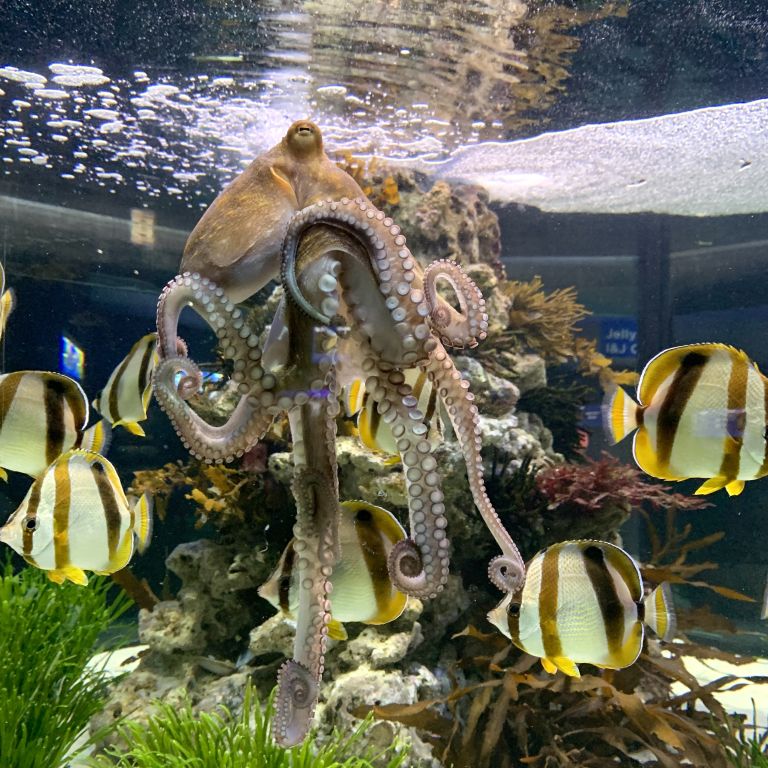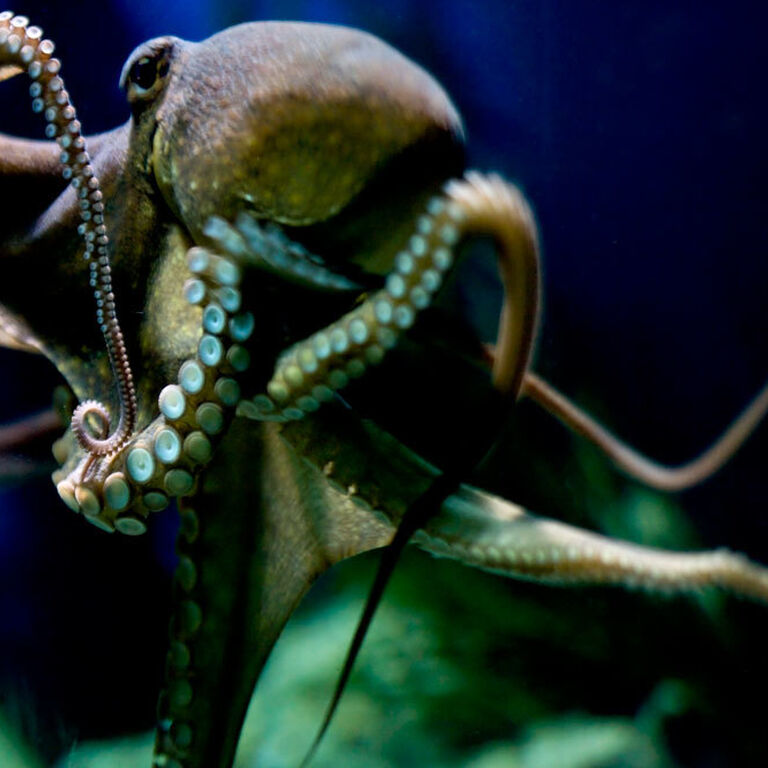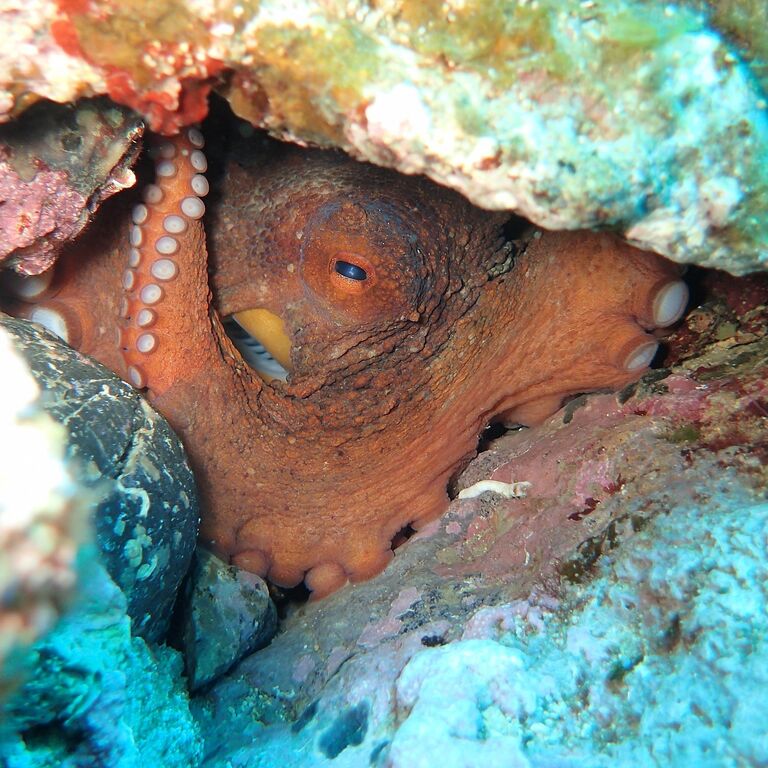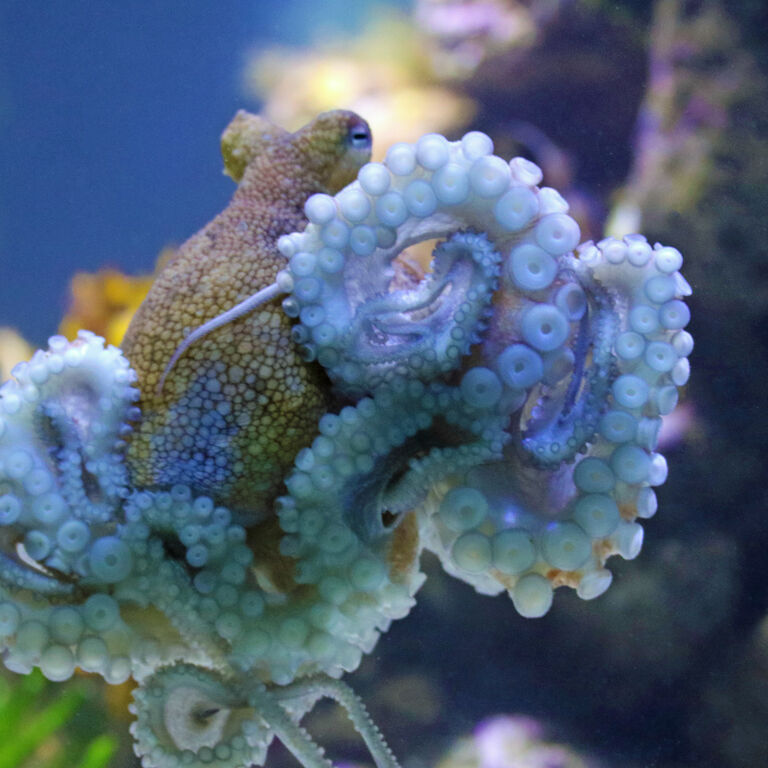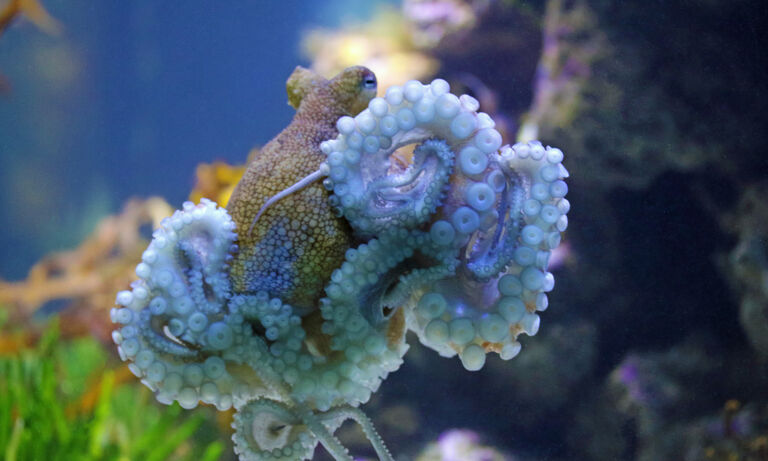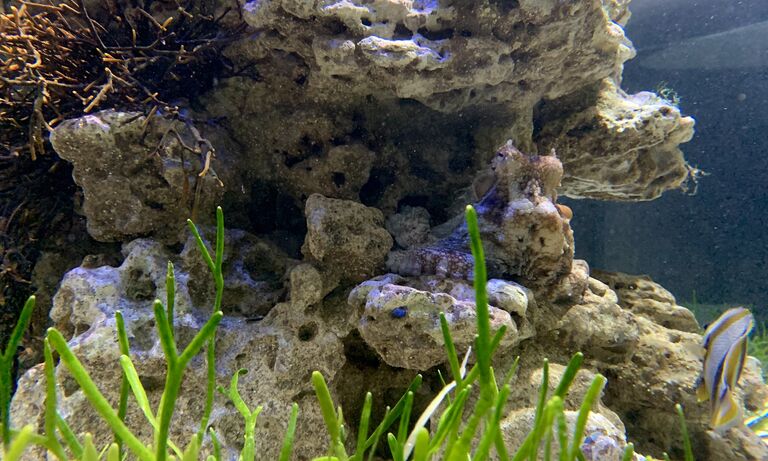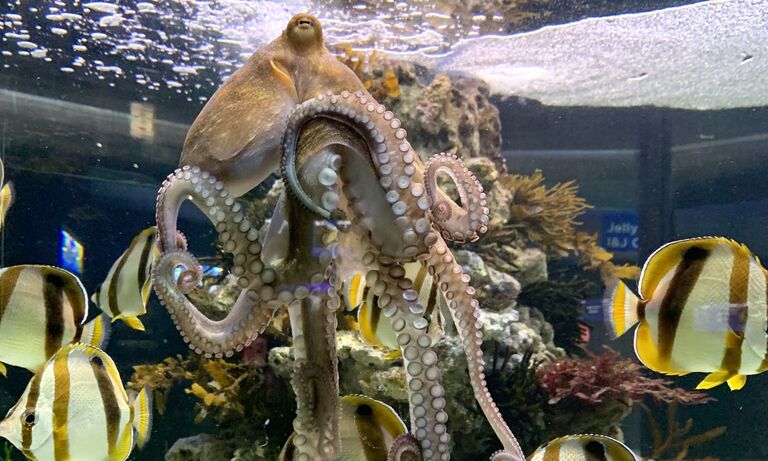Octopuses
There are around 300 species of octopus, and they are found in every ocean, most living on the seafloor but some drifting nearer to the surface. In South Africa, the most common octopus is… the common octopus or Octopus vulgaris. The octopus is a master of camouflage and is renowned for its rapid colour changes. It can adapt its body colour to match that of the surrounding environment within seconds. Our common octopus is housed in the Diversity Gallery – be sure to check it out.
